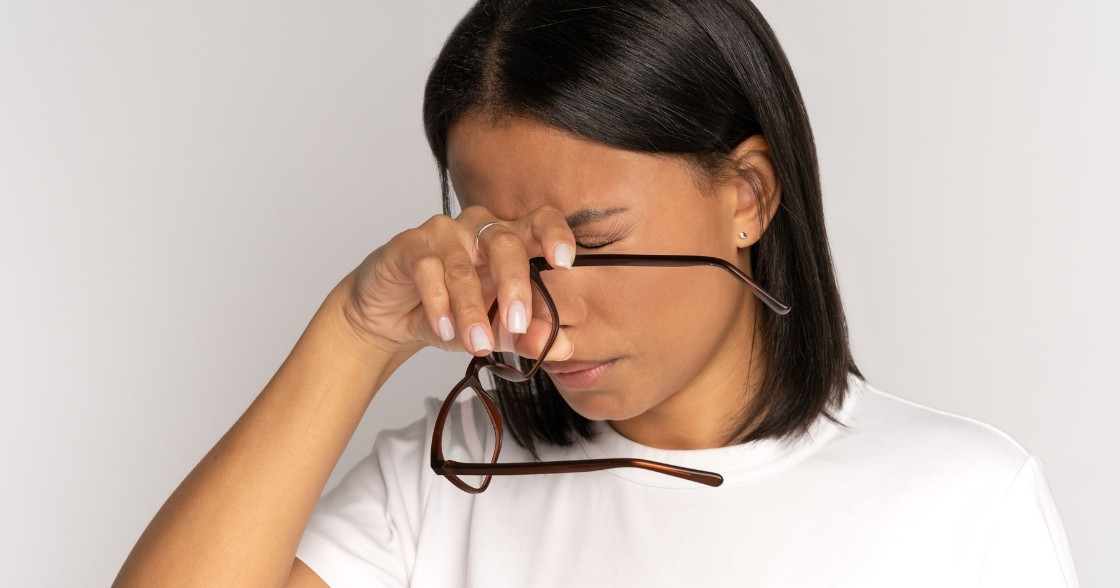Self care guide for dry eyes: treat the root cause
Have you ever experienced a burning or gritty sensation in your eyes? If so, you might have experienced dry eyes. Dry eyes are a prevalent condition estimated to affect over 16 million Americans every year, with people over the age of 50 and women being the most affected (“Dry Eye” 2022). In fact, worldwide income from dry eye treatments is estimated to increase from 4.6 billion dollars in 2018 to 6.2 billion dollars in 2023 (Dalton 2020).
In this article, you will learn what causes dry eyes, how to treat the symptoms, and how to lower the risk of getting dry eyes in the future. At the end, you will learn about the root cause of dry eyes and the best long-term solution for dry eyes.
What are Dry Eyes?
There are three types of tears: basal, emotional, and reflex tears. Emotional tears are exclusive to human beings and are produced when you experience strong emotions. Reflex tears are produced as a response to outside stimulus, such as smoke or onion fumes, and are made of mostly water.
Basal tears are the most complex and the most important. They are made of mucus, oil, and water, and are used to lubricate, transport nutrients to, and protect your eyes. When your eyes are healthy, they produce basal tears constantly throughout the day. This keeps your eyes clean and prevents infections. Basal tears also prevent small particles from entering the eyes.
Dry eyes is a condition that occurs when small glands in the eyes stop producing the right quantity or quality of basal tears to keep the eyes healthy and clear. When this happens, the eyes’ surface stops being adequately lubricated to wash away any particles that enter. This leads to the feeling of having a grain of sand stuck in your eyes as well as a prickling, burning sensation.
How to Treat Dry Eyes
To combat dry eyes, doctors may prescribe medication or even surgery to increase the production of tears, but there are also things you can do at home to treat dry eye symptoms, such as washing your eyelids and using warm compresses. They might help some people, but they may not be practical in every situation.
When washing your eyelids, use a gentle cleanser, such as baby shampoo, and rub a small amount between your fingers until bubbles form. Maintaining closed eyes, massage the cleanser gently into the base of your eyelids by your eyelashes and then rinse off using warm water.
For warm compresses, use a bowl of warm water and a clean, lint-free towel or washcloth and wring it out. Place the compress on your closed eyes and gently apply pressure to your eyelids, so the heat helps remove any blockages on the oil glands. The heat also helps soothe any inflammation or irritation caused by dry eyes. Do this for at least 1 minute to a maximum of 10 minutes each day, making sure to keep the washcloth or towel warm by soaking it in the bowl.
You can also use eye drops for quick relief, but keep in mind that eye drops with preservatives can irritate the eyes. Eye drops that reduce redness are not recommended for dry eyes as they will only cause more irritation.
How to Prevent Dry Eyes
You can try the following self-care tips to lower the risk of getting dry eyes:
- Drink enough water every day. This keeps your body hydrated so more basal tears can be produced. You can tell if you are well hydrated when your urine is colorless or light yellow.
- Avoid drinking alcohol and smoking. Alcohol dehydrates your body, and the chemicals that are produced from smoking will irritate the eyes and lower the quality of your basal tears.
- Avoid staying in high-wind, dry, or air-polluted areas without protective eyewear. Wear sunglasses when going outside to protect your eyes from UV rays and bright light, as they both can irritate the eyes and intensify any dry eye symptoms.
- Using a humidifier or placing a bowl of water near your radiator to keep your home environment humid will prevent your eyes from drying out too quickly during the day. You can also get an air cleaner to filter particles from the air, which also helps prevent dry eyes.
- Increase omega-3 intake in your diet. The healthy omega-3 fat will help the oil glands in your eyes work better and decrease irritation. Foods rich in omega-3 include: fish (mackerel, salmon, sardines, trout, tuna, etc.), walnuts, flaxseed, and vegetable oils (canola oil, soybean oil, olive oil, etc.).
- Take breaks and blink more. This is especially important when spending time on a screen because they tend to make you blink less, which dries out your eyes faster. If you need to spend a long time on a computer or other electronic device with a screen, follow the 20/20 rule: close your eyes for 20 seconds every 20 minutes.
The Root Cause of Dry Eyes
In this article, we covered how the symptoms of dry eyes can be treated, but they will not help solve the problem entirely, as there is an underlying root cause. (refer to Don’t mistake symptoms as causes) As mentioned earlier, dry eyes are caused by a lack of high-quality basal tears, which is one kind of bodily fluid.
There are two different approaches to treating dry eyes: western medical treatment and qigong treatment. Western medical treatment deals with the symptoms, not the cause. Eye drops, for example, may temporarily relieve dry eyes but cannot cure them. In qigong treatment, we work on qi, the raw material for your body function. When your body lacks qi, you will encounter different health problems; dry eyes are just one of them.
Your body needs enough qi, vital life energy, to manifest into bodily fluids. Practicing qigong is a way to strengthen and gather your body qi, which is how to treat the root cause of dry eyes. We have specific qigong practices for your eye health. If you are new to qigong or would like to learn more, you can check out the qigong for beginners guide.
Works Cited
- Dalton, Michelle. “Understanding Prevalence, Demographics of Dry Eye Disease.” Ophthalmology Times, Ophthalmology Times, 15 Nov. 2020, https://www.ophthalmologytimes.com/view/understanding-prevalence-demographics-dry-eye-disease.
- “Dry Eye.” National Eye Institute, U.S. Department of Health and Human Services, 8 Apr. 2022, https://www.nei.nih.gov/learn-about-eye-health/eye-conditions-and-diseases/dry-eye.







